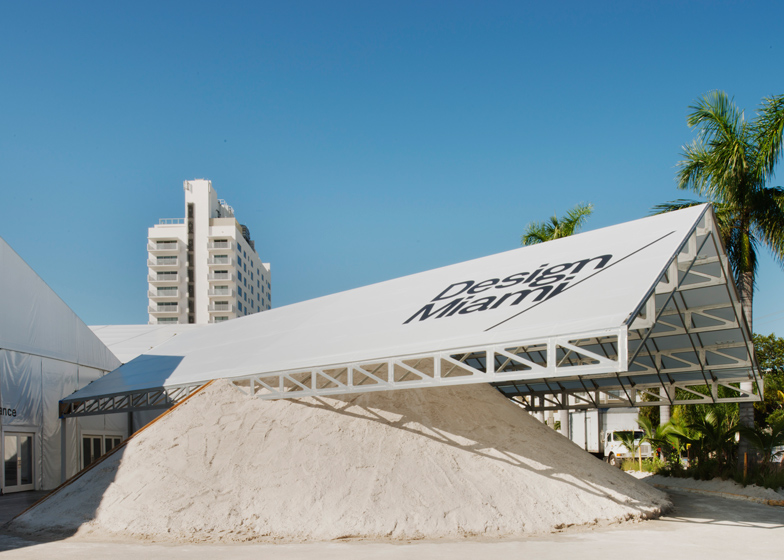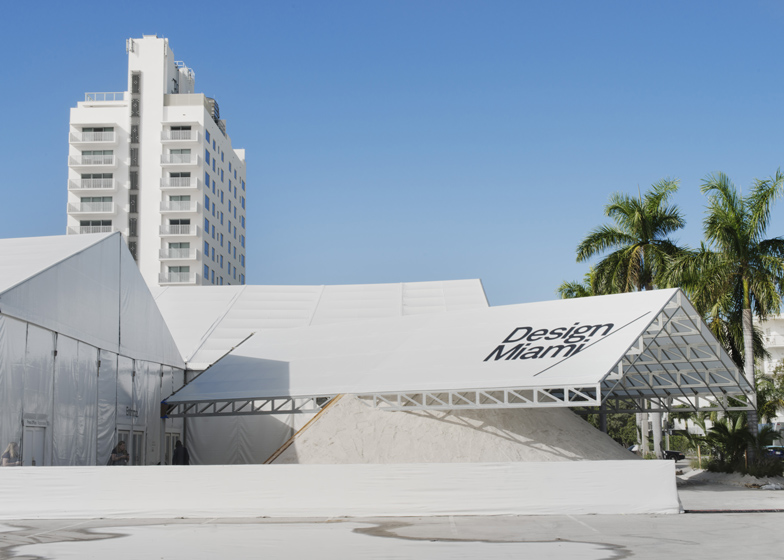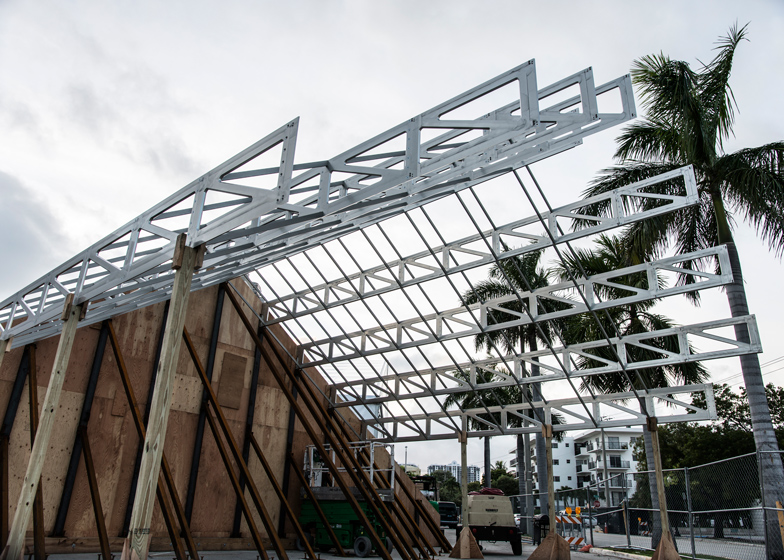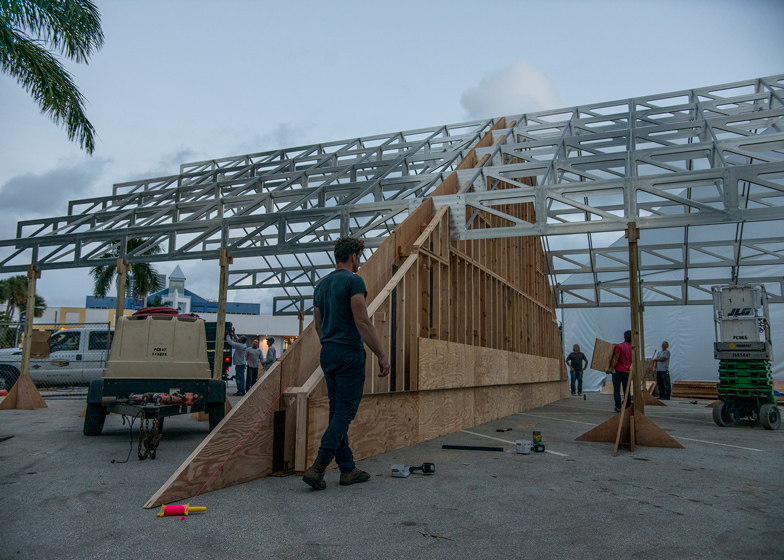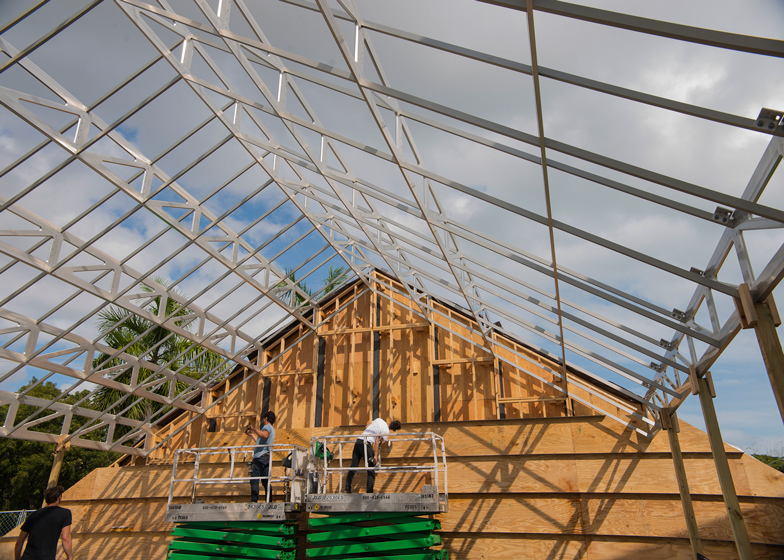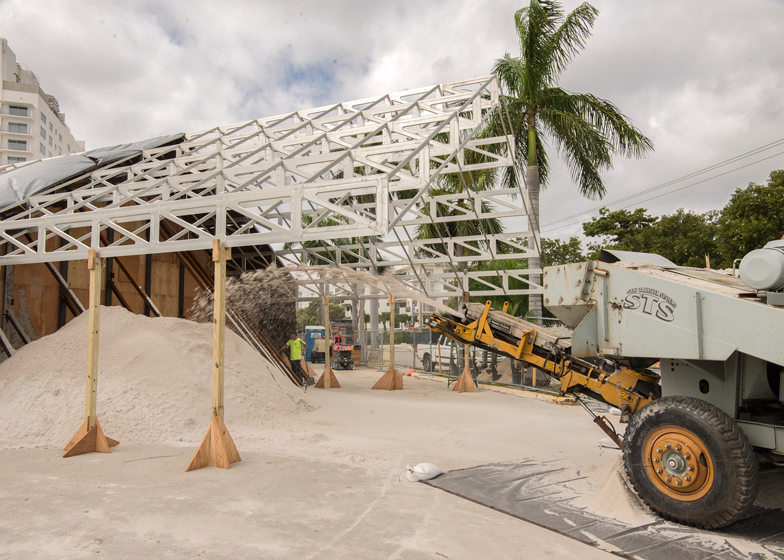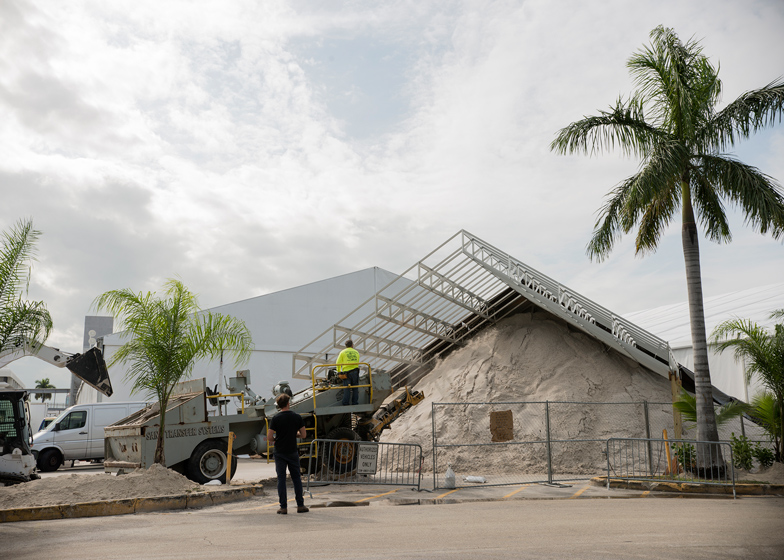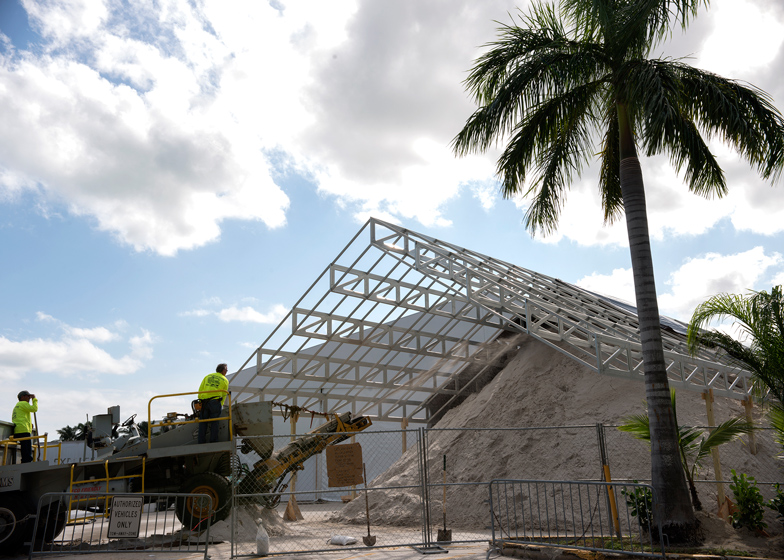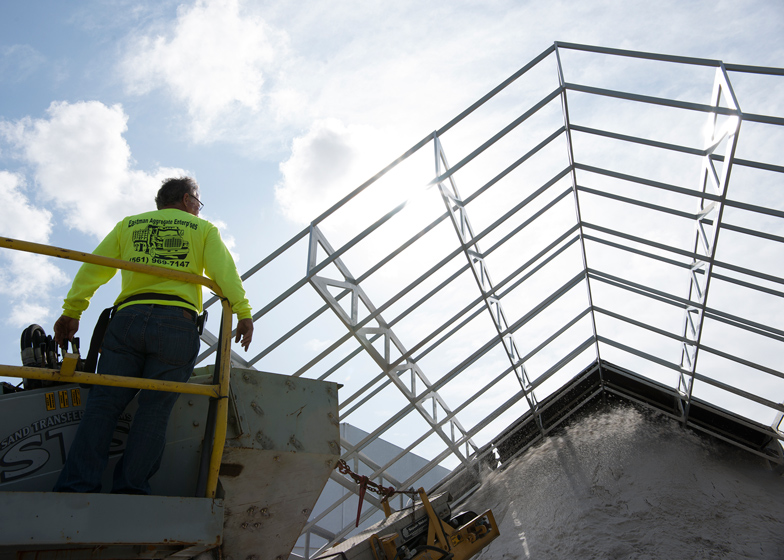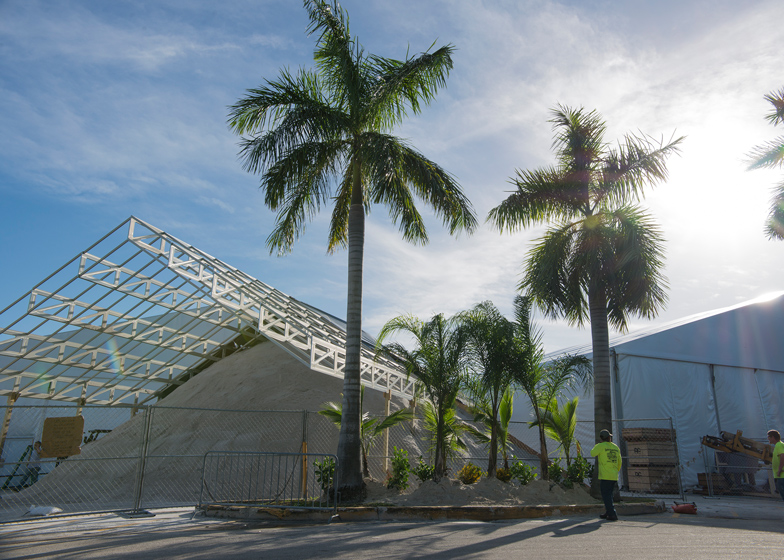Design Miami 2013: giant mound of sand appears to support an aluminium roof at New York studio Formlessfinder's Tent Pile installation outside this year's Design Miami fair, which opens to the public today (+ slideshow).
Formlessfinder was commissioned by Design Miami to create the temporary pavilion for the entrance to this year's fair. Although the gabled roof appears to be supported by the pyramid of sand at first glance, it is held up by timber columns and a plywood wall across its centre.
Five hundred tons of sand are piled up against the central wall, dividing the area beneath the roof into two.
The wall is kept upright by a number of diagonal metal braces, which prevent the weight of the sand from pushing it over and also transfer the cool temperature of the sand to the seating area on the other side of the retaining panel.
On this side, visitors can rest in the shade on milled aluminium benches and beneath fans before entering the exhibition.
The designers intend the pile of sand to be sat on and played in. "We're hoping to create something that people would want to participate in," said practice co-founder Garrett Ricciardi when the design was released in October.
The roof comprises a series of anodised aluminium trusses made by fabricator Neal Feay, which run lengthways and are connected by thin struts.
Dezeen is currently in Miami for the last leg of this year's Dezeen and MINI World Tour and we'll be posting video reports from the event soon.
Last year visitors entered the exhibition space under a canopy of inflatable sausages designed by Snarkitecture. This year's fair continues until Sunday.
Photography of the pavilion under construction is by Michael Landsberg.
Here's some more text from Design Miami:
NYC-based architectural practice Formlessfinder to design a pavilion for Design Miami's 2013 commission
Each December, Design Miami/ commissions early-career architects to build a designed environment for the fair's entrance as part of its biannual Design Commissions program.
Harnessing multiple, often unexpected, properties of sand and aluminium, Formlessfinder's Tent Pile pavilion provides shade, seating, cool air and a space to play for the city's public. The pavilion appears as a dramatic aluminium roof miraculously balanced on the apex of a great pyramid of loose sand. Milled aluminium benches give resting space in the shade, where visitors will be fanned by the cool air naturally generated by the structure.
Formlessfinder describes itself as a "formless" architectural practice – a studio where an expanded range of ideas, material considerations, construction techniques and user interactions all take priority over the shape of the final building. "Form is often the default lens for thinking about architecture. Even when people think they're talking about something else, like function or structure, there's often some kind of formal idea underlying the discussion. We're trying to shift away from form so that we can explore other qualities of architecture, such as new ways of experiencing space or innovative ways of using materials," explains Julian Rose, who co-founded the practice in 2010 with Garrett Ricciardi. The pair refer to their practice as a "finder" because it has a multifaceted output, which includes research projects and a forthcoming book. But while the theoretical aspect is important to its work, Formlessfinder still has the creation of physical structures at its heart.
Formlessfinder approaches new projects with an interest in the specifics of geography and the use of available and appropriate materials, committing to use them in a way that allows for re-use. In researching ideas for Tent Pile at Design Miami/ 2013, Rose and Ricciardi ultimately focused on two phenomena very particular to Miami. The first was the ubiquity of sand in the region; those golden grains visible on the beaches also lie beneath the foundations of every building in the city and beyond. Any kind of construction in Miami must take into account the loose and shifting layer on which the final structure will ultimately float. The second was the architectural vernacular of the city; a kind of tropical post-war modernism distinguished by hybrid indoor/outdoor spaces of which the cantilevered roof seemed particularly emblematic. To design the roof and subsequent seating, the architects enlisted the support of materials powerhouse Alcoa and third-generation aluminium fabricator Neal Feay, both of which were integral in giving life to the ambitious truss design of the roof, executed in anodised aluminium.
Formlessfinder's pavilion takes the sand that is elsewhere so problematic and uses it to advantage. The sand which is so destabilising for architectural projects elsewhere in Miami here becomes the stabilising element of the structure, mooring the lightweight aluminium roof, in lieu of an excavated foundation, for the cantilever, while also being a zero-waste material, completely re-usable after its time at the pavilion.
A retaining wall appears to slice the pyramid of sand in half, creating a more ordered space immediately in front of the entrance to the fair. Bench seating in a variety of sizes is provided by large sheets of aluminium fixed to simple wood bases, foregrounding the raw nature of the materials used. Arranged in a 500-ton pyramid the sand has a thermal mass cooling effect – metal fins driven through the retaining wall into the sand will draw the cool temperature into the seating area, and simple fans will create a refreshing breeze rippling out from the wall.
The pavilion acts as a refuge for the more than 50,000 visitors who come to Miami for the fairs each year, as well as inhabitants of the city's South Beach neighbourhood. It is intended as a public installation that marries the practical requirements of shelter and seating to spectacular creative architectural ideas from a young practice. Formlessfinder's Tent Pile engages not only with materials and aesthetics specific to Miami, but with the location of the fair within the city – the pyramid of sand is there to be sat on and played in, the cooling fans to be approached, examined and enjoyed. "We're hoping to create something that people would want to participate in," says Ricciardi, and the result is a structure designed to be occupied and explored, as much as it is to be admired.

